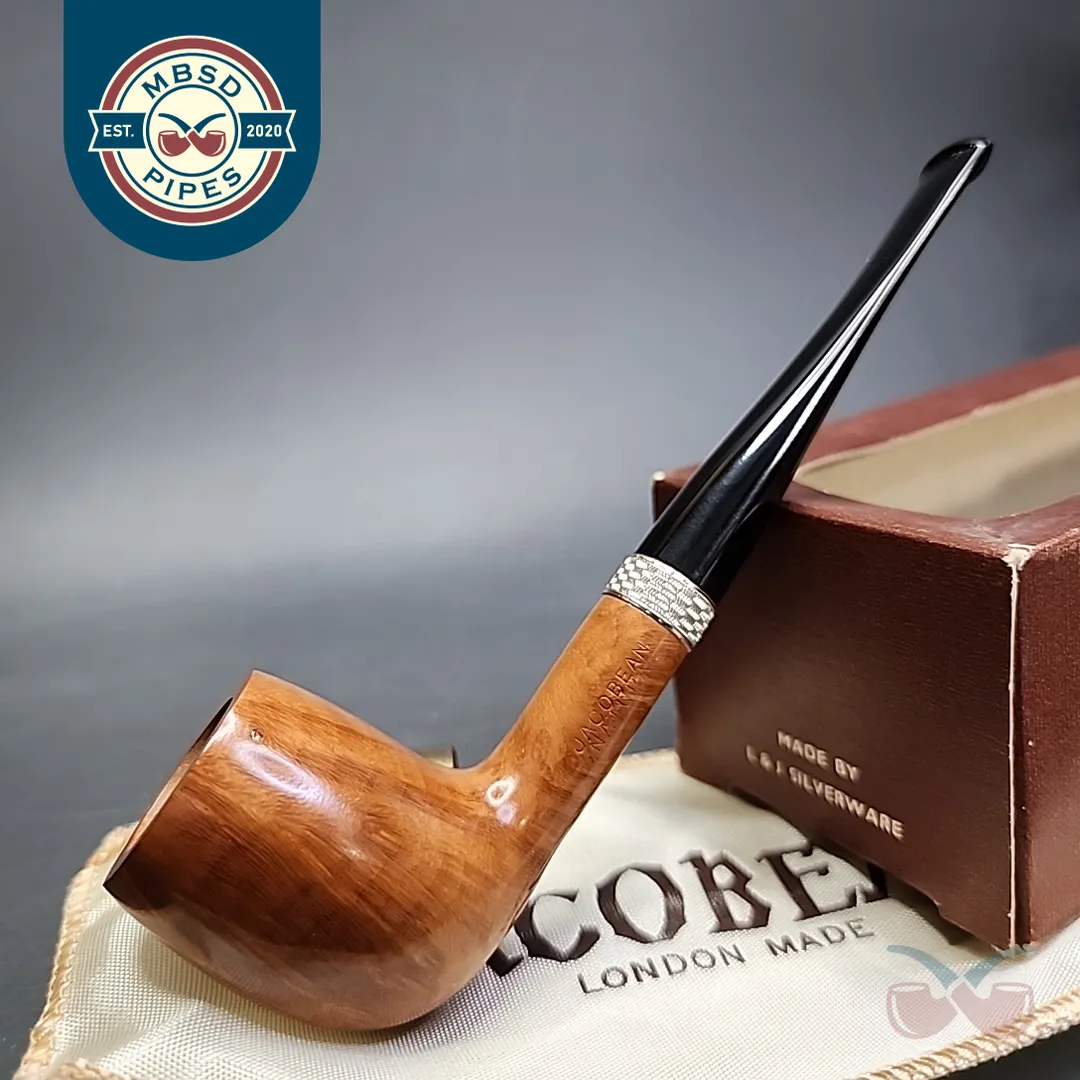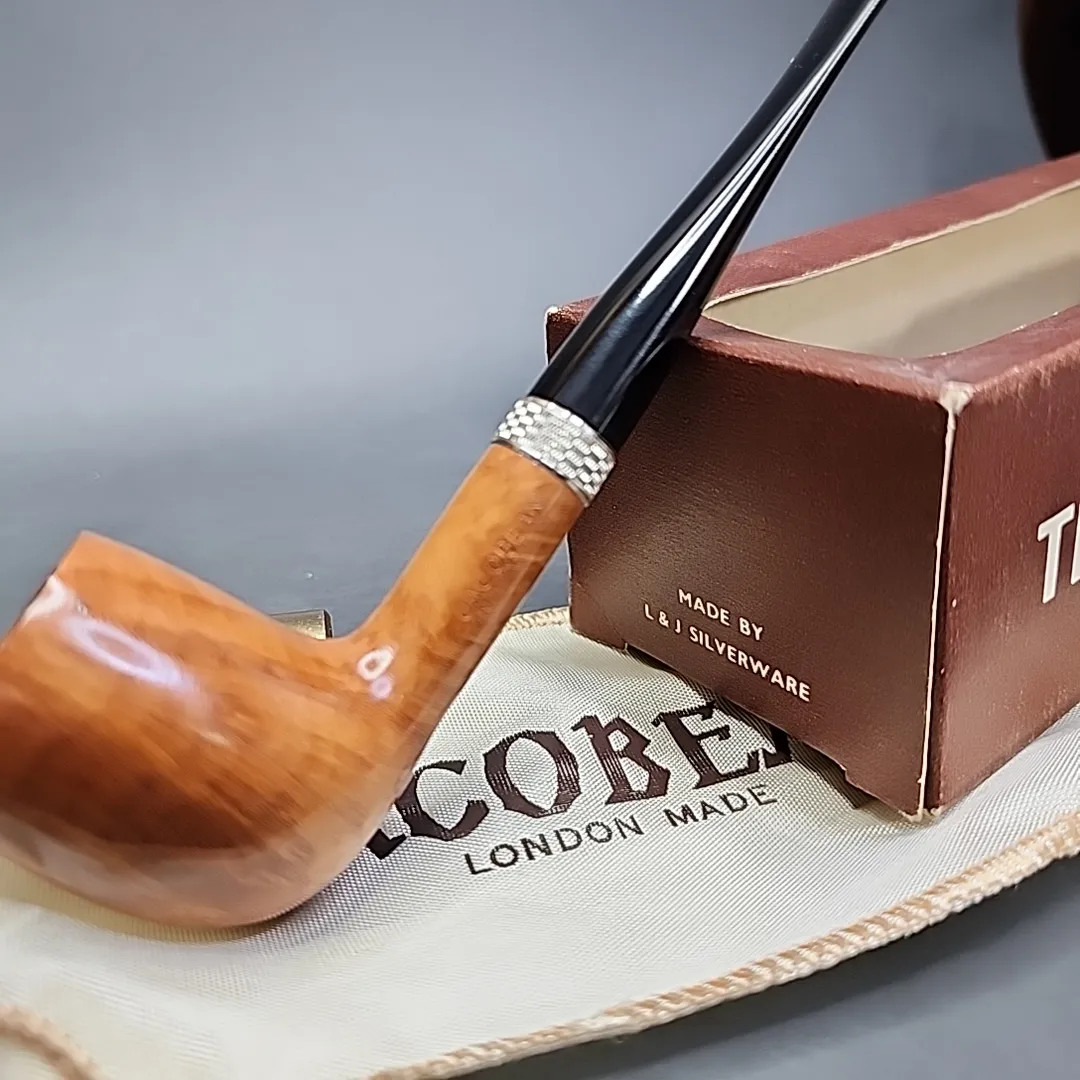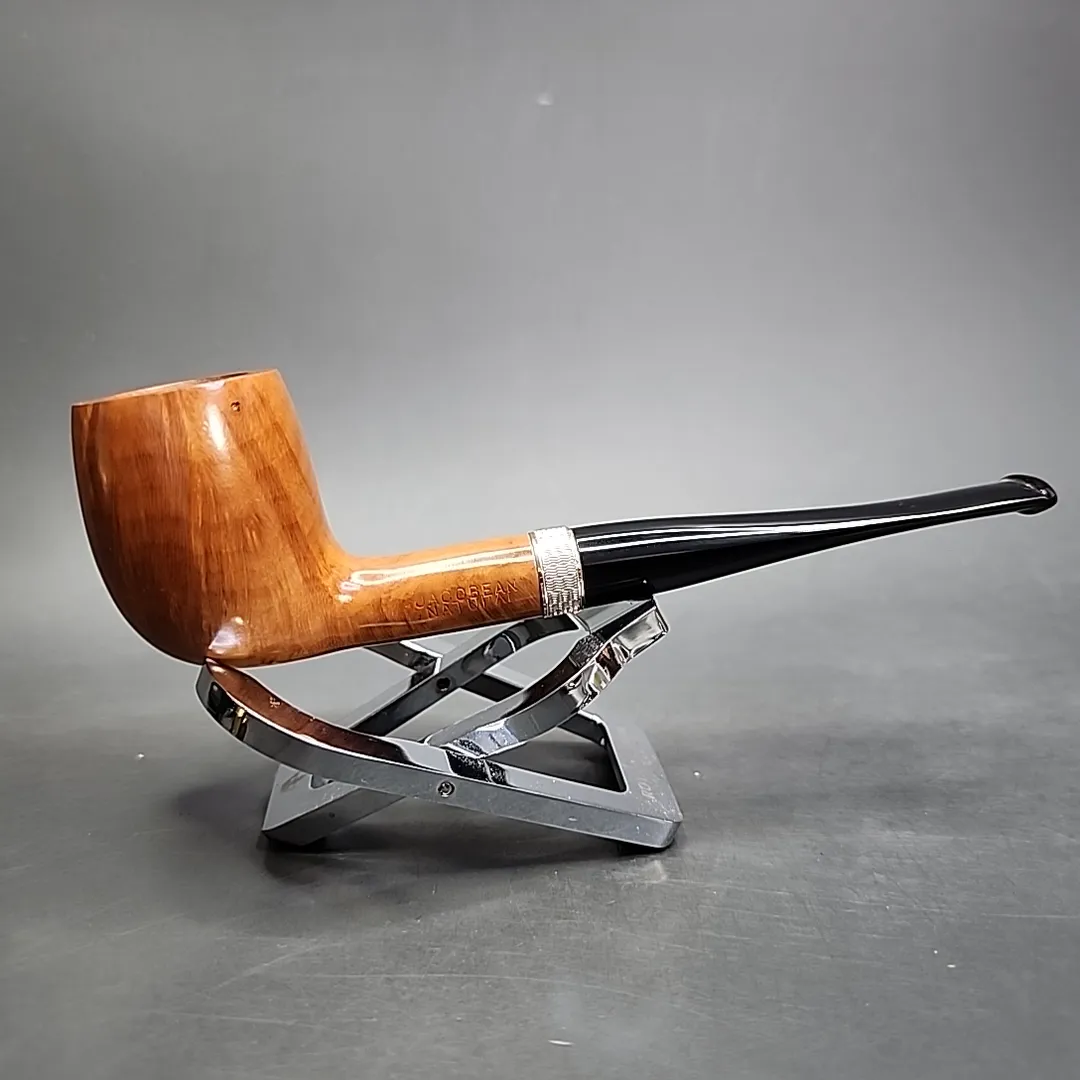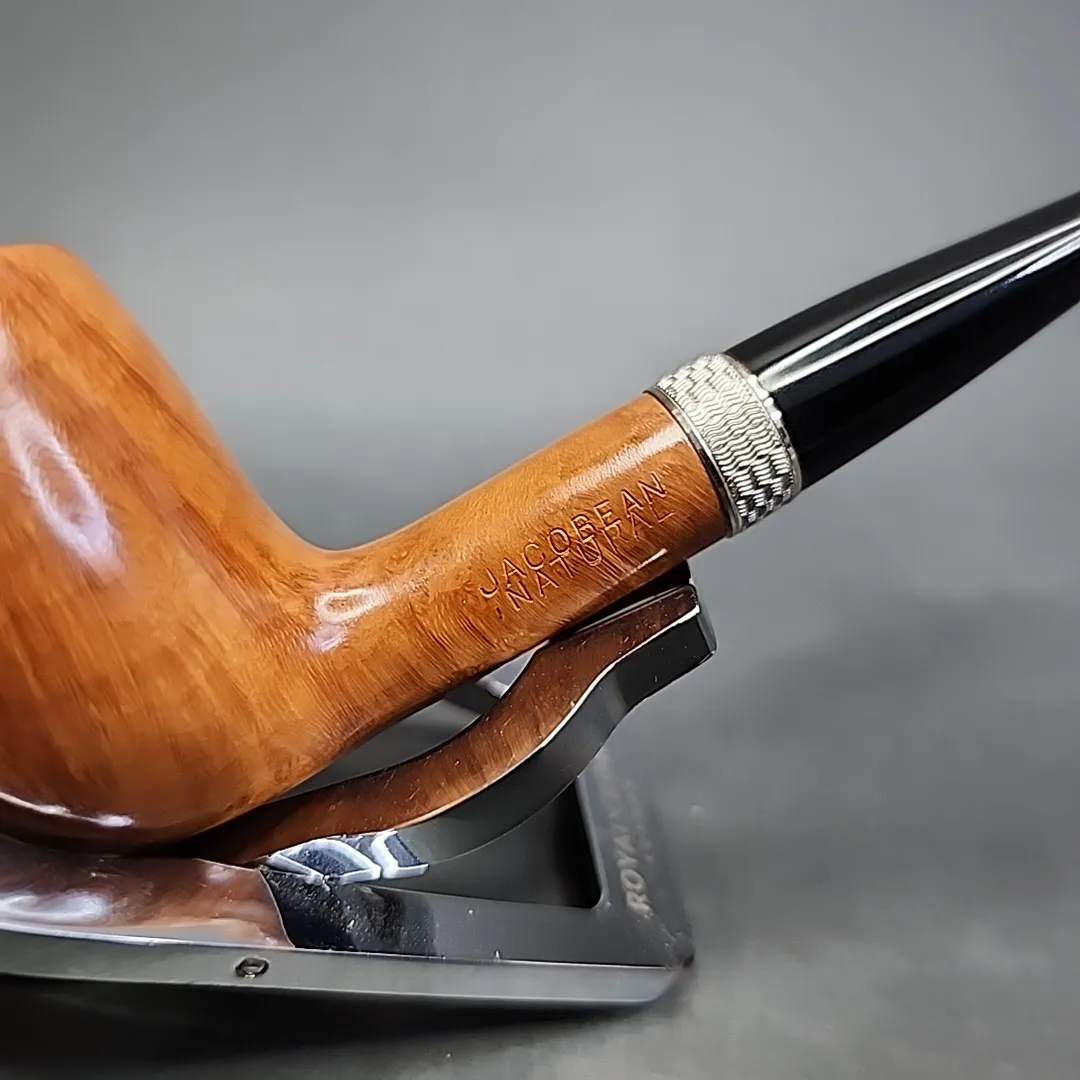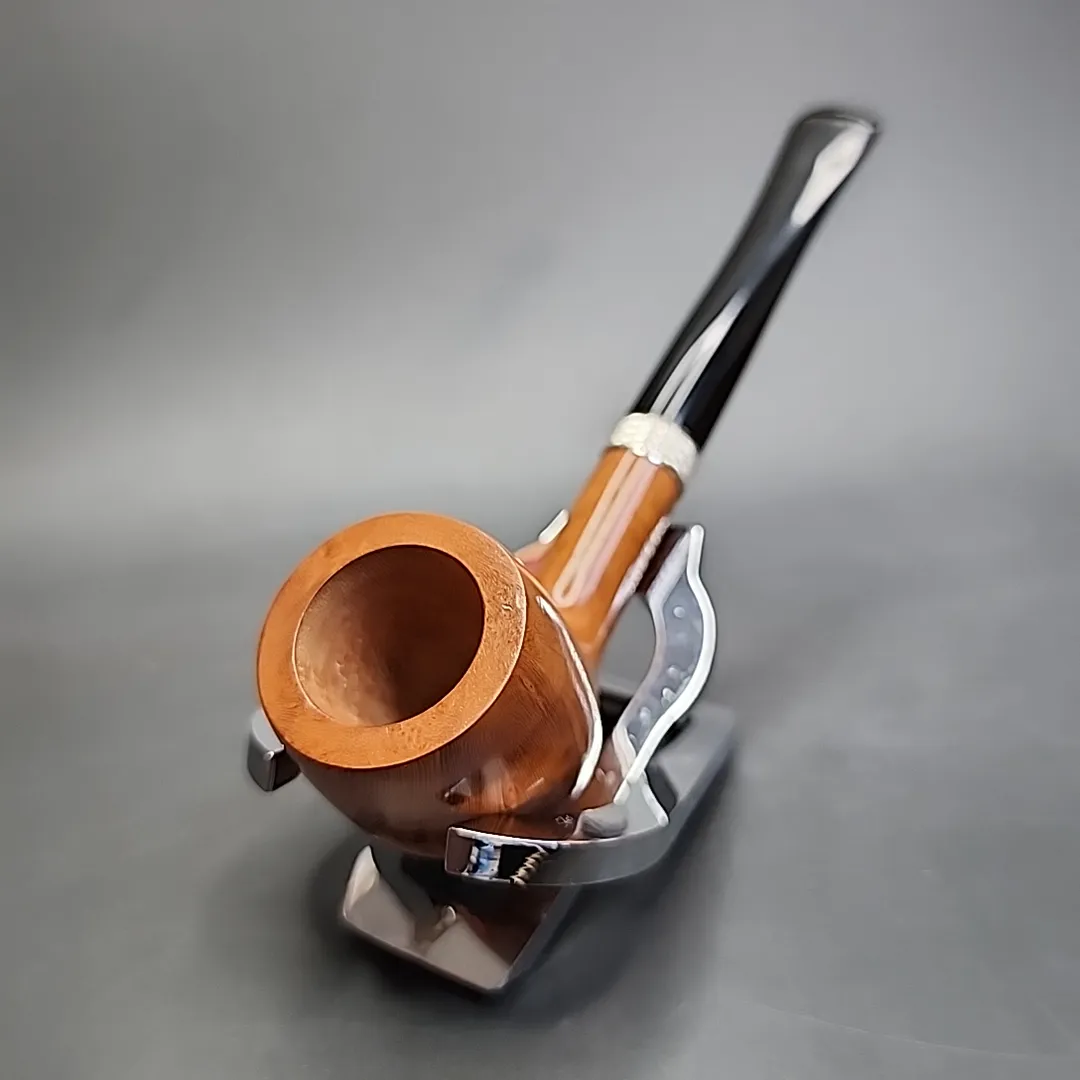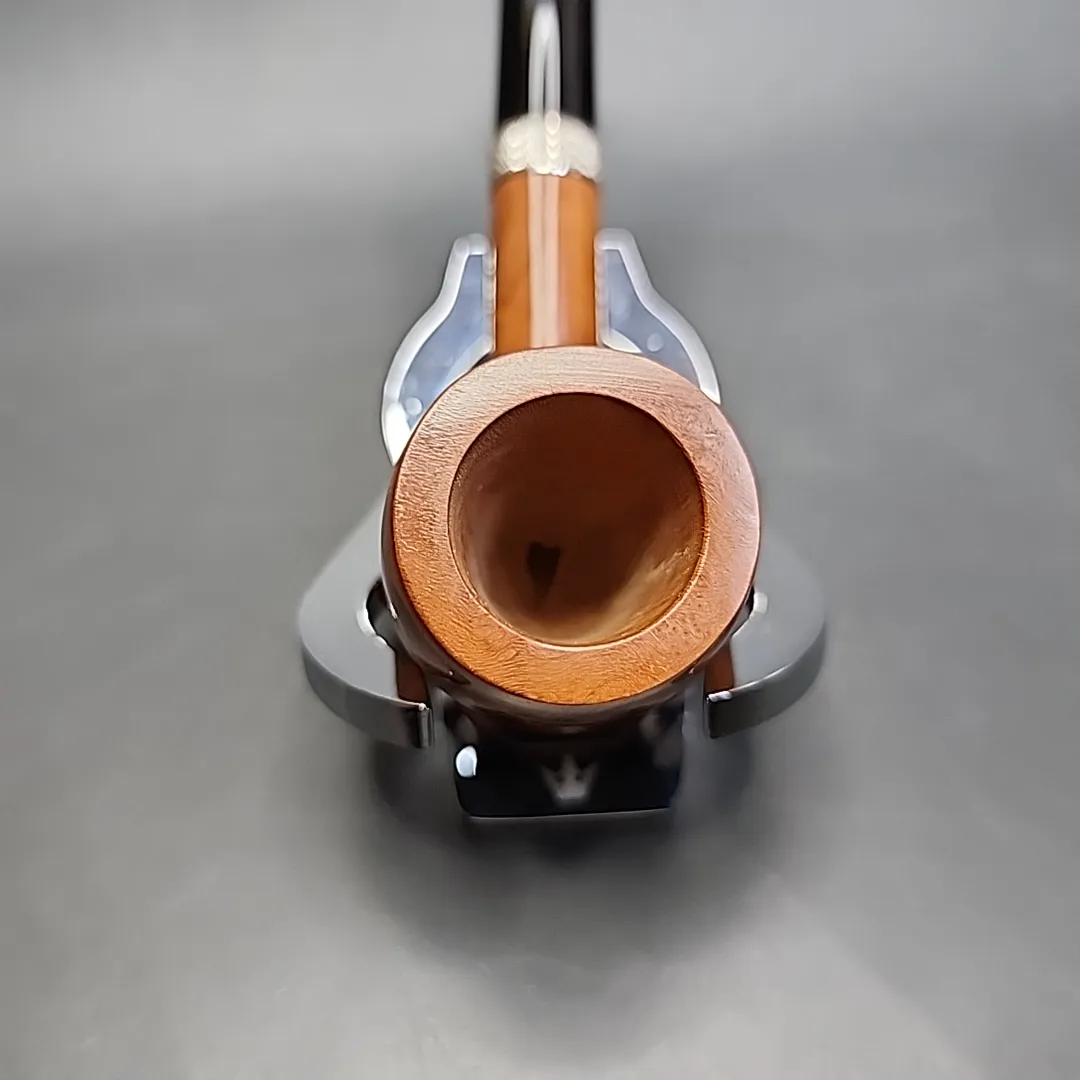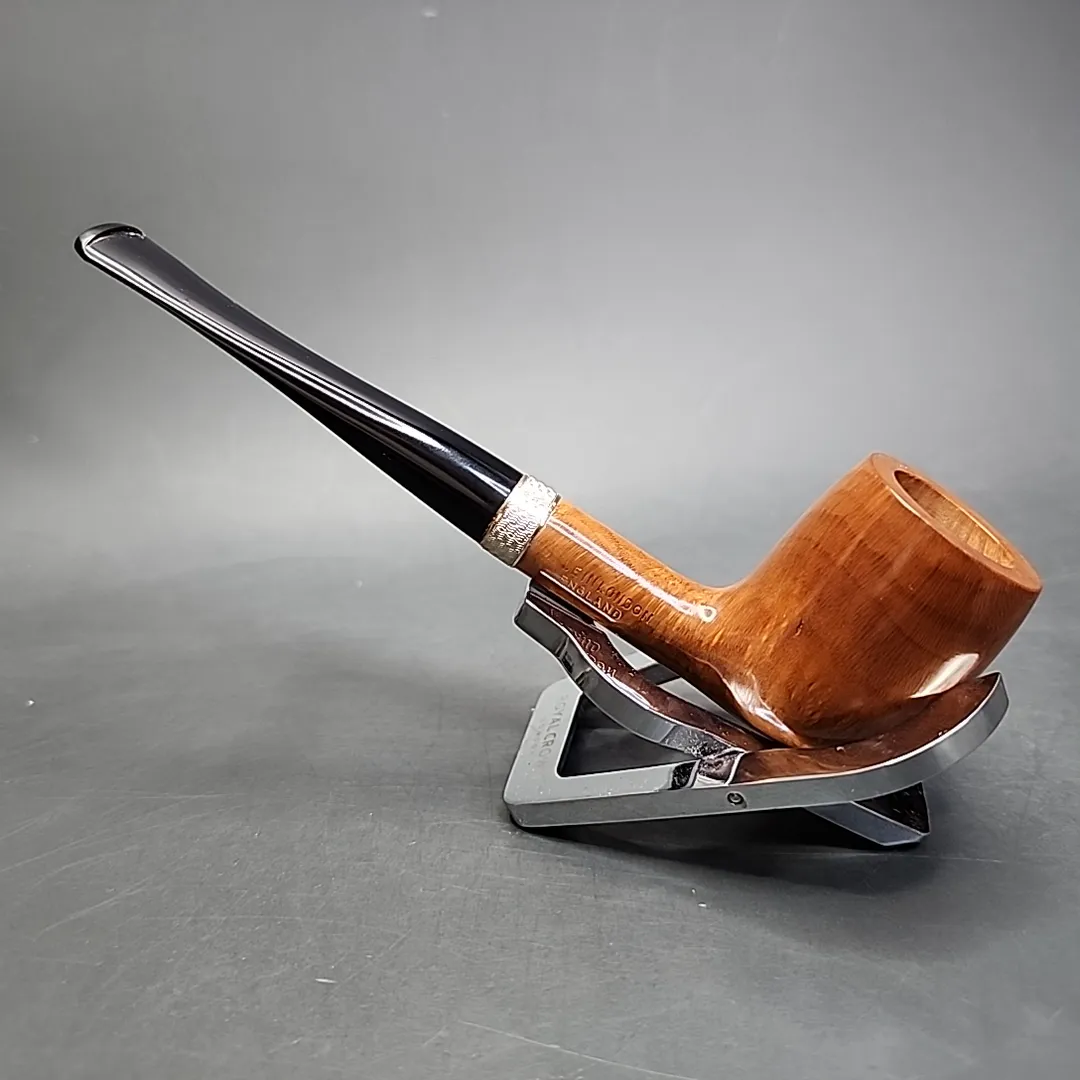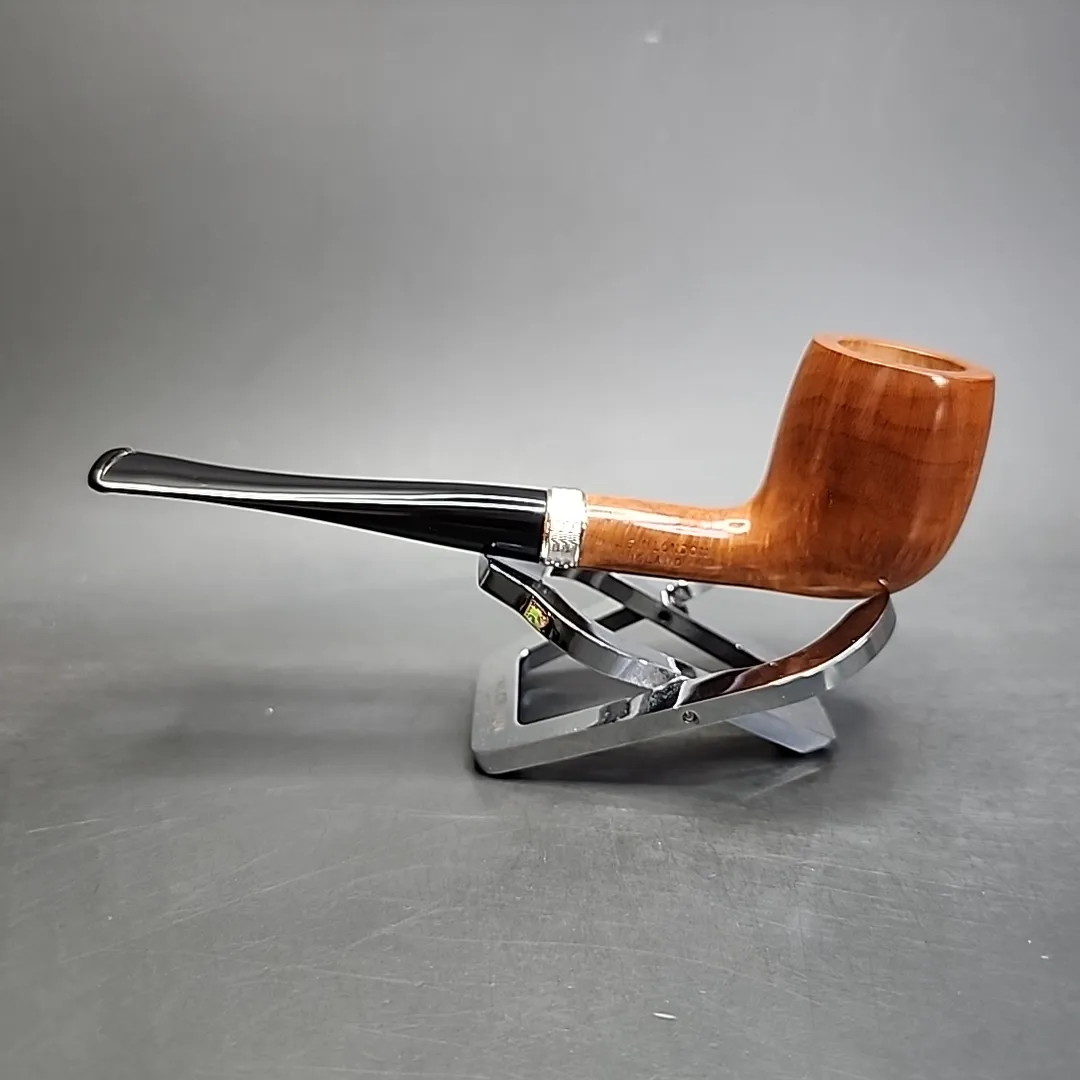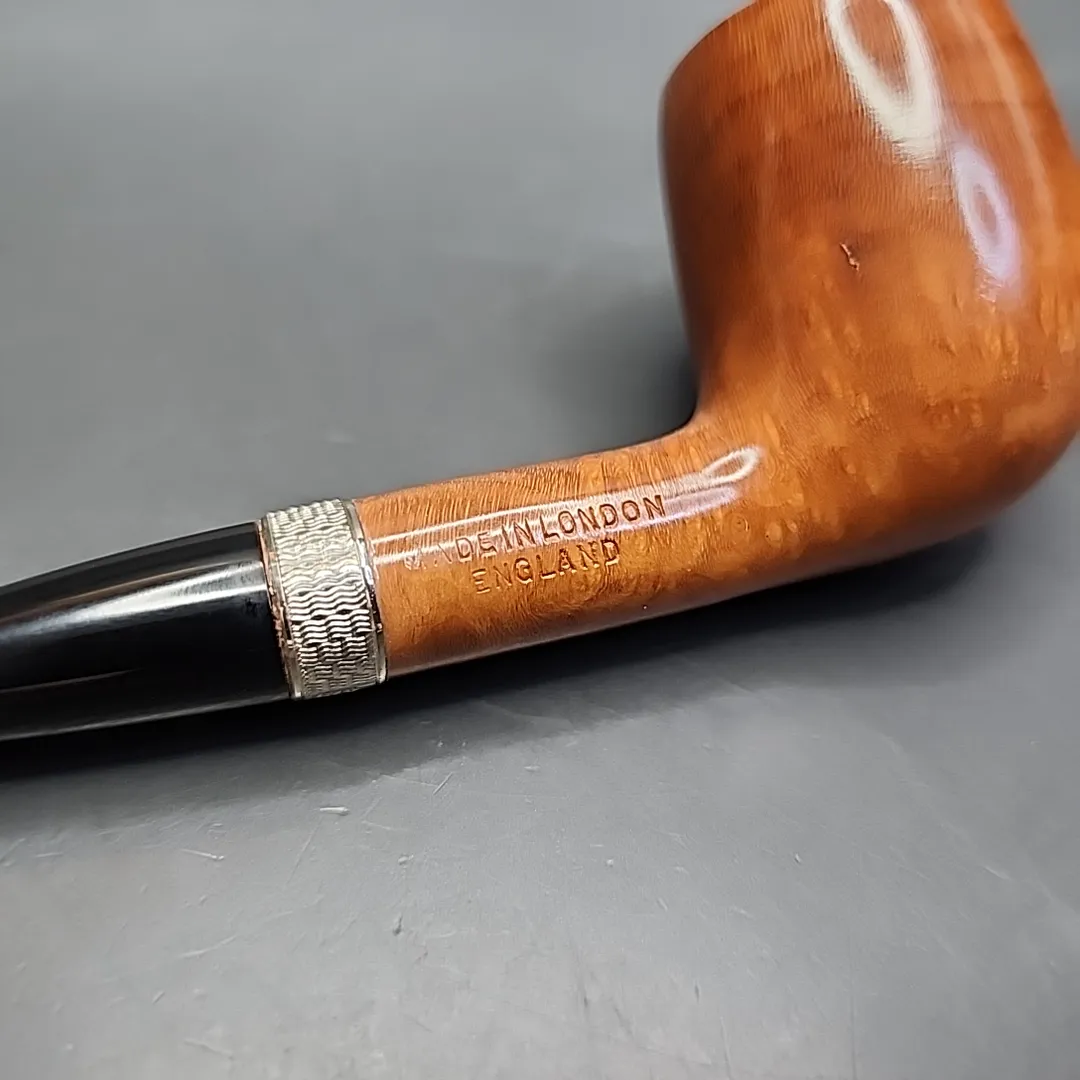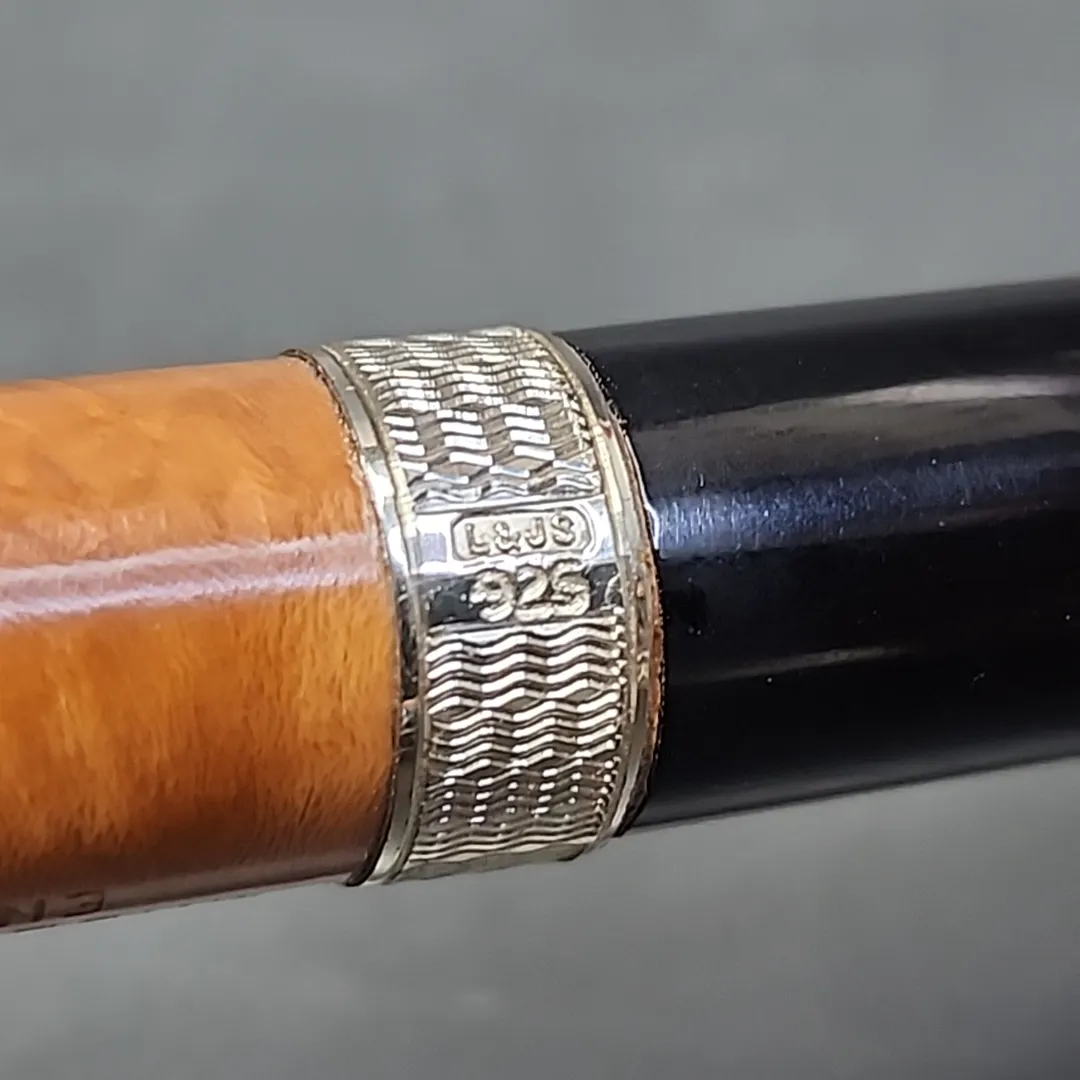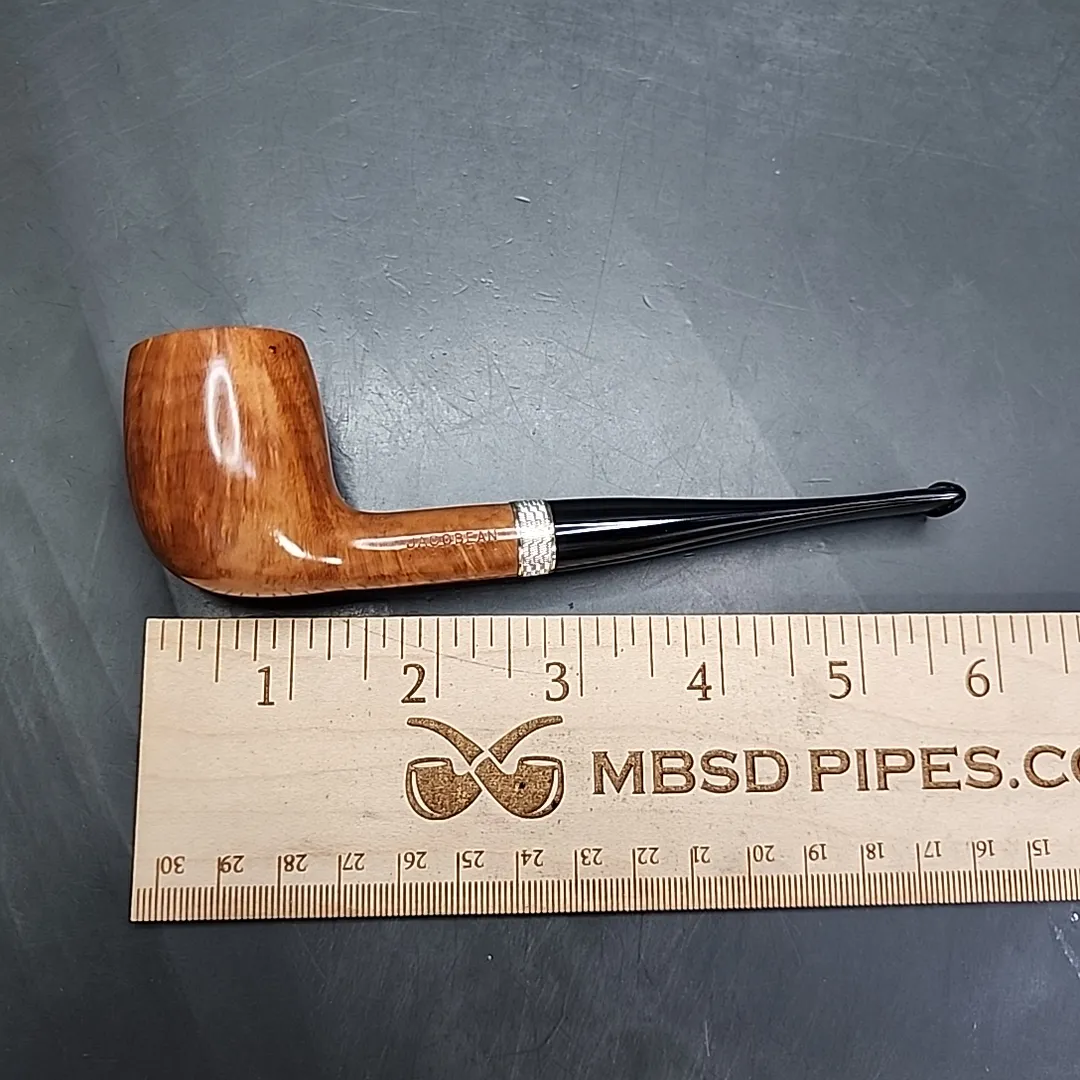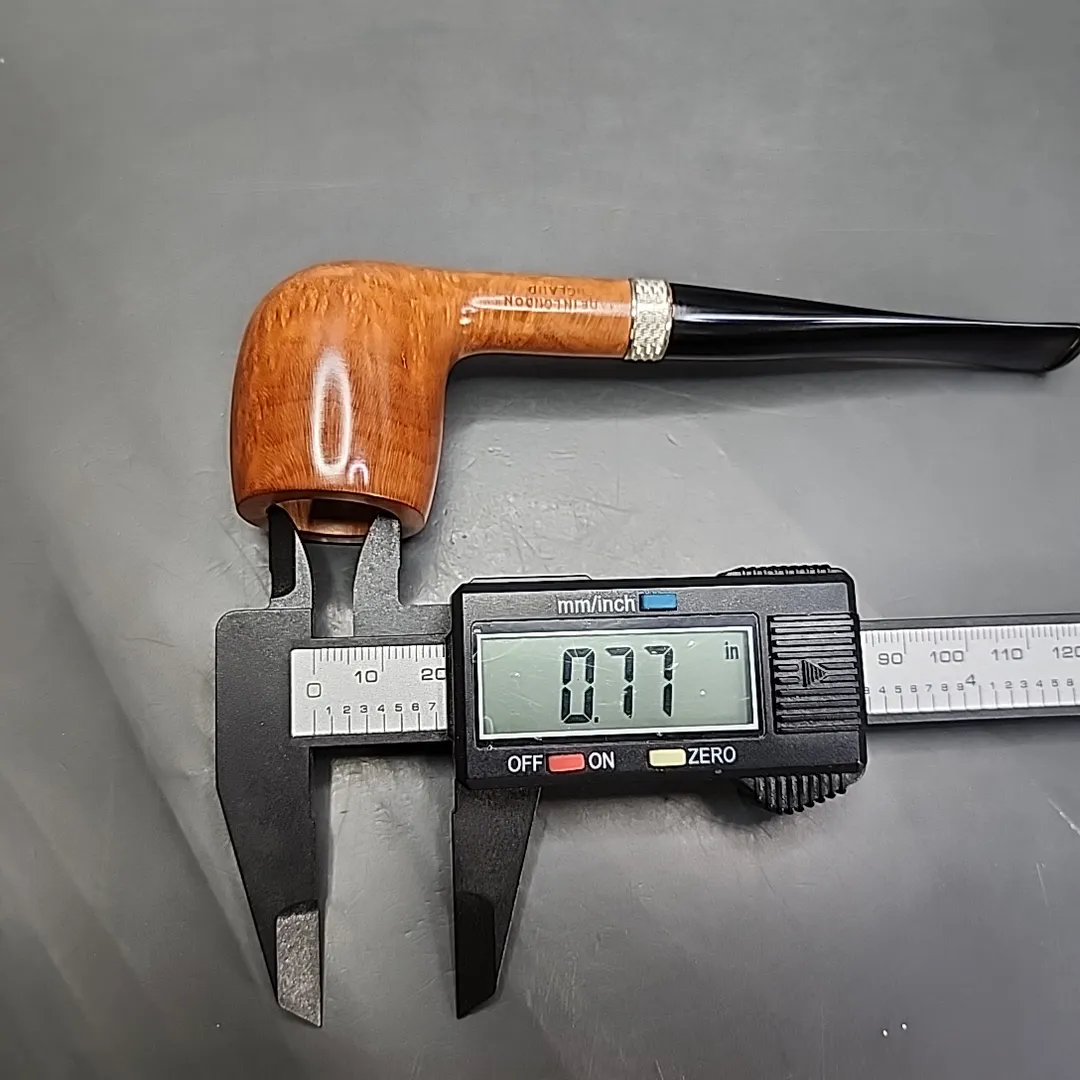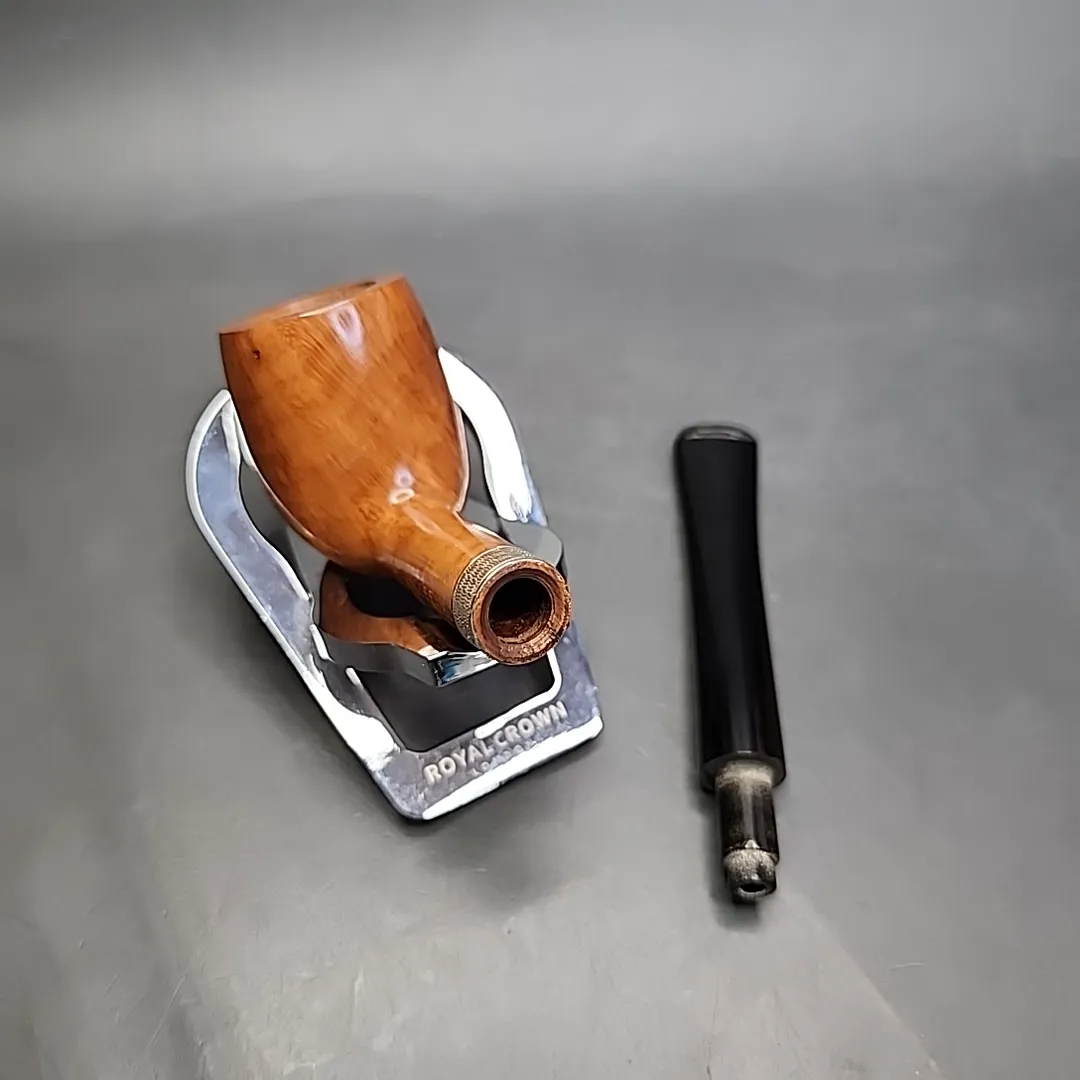Jacobean Natural by Les Wood Smooth Straight Billiard Estate Briar Pipe, Unsmoked
Out of stock
Description
This pipe requires some explaining. In fact, it requires quite a lot of explaining, which will be covered more extensively in our upcoming interview with the now-retired pipe-maker Les Wood. Because that interview is taking more time than expected to edit, I figured I’d ask the interviewer, James, to let me know the basic story behind the pipe you’re seeing here. This is what he relayed to me.
Les Wood is most famous for Ferndown, a make of pipes created by Les and his wife Dolly. But Les and Dolly’s pipe-making didn’t begin with the Ferndown make. There were, in fact, several different names chosen for their pipes that came before Ferndown did. Because of Les’s interest in British royal history, one of those names was “Jacobean.” But, as people outside of England had no idea how to even pronounce “Jacobean,” the make was short-lived, being only produced in the early 1980s, at a time when Les was half working for Dunhill and half working privately as L&JS Silverware.
This leads to a question: What’s the difference between a Jacobean and a Ferndown? In some senses, not much, in others, a bit more.
First, Jacobean pipes were turned “freehand,” in a similar way to James Upshall or earlier Charatan ones were. There were no pre-set shapes or shape charts, not even informal ones. Les took a block of briar to the lathe, turned the bowl until he was satisfied with the shape that emerged, then turned the shank until he was similarly satisfied with the result. The shapes of Jacobean stummels were therefore all different, rather than setting everything up beforehand to make several of the exact same shape, as Les would typically later do for Ferndown orders. The stummels were then oil-cured, just as Ferndowns would later be.
Second, the stems were made from cast ebonite rather than hand cut entirely from ebonite rods. The pipes were then finished by Dolly in her inimitable manner, just as with the later Ferndowns. Then, Les would apply silver bands to the pipes, just as with the Ferndowns.
Third, the names of finishes were slightly different. This one here is a Jacobean “Natural.” It looks like a Ferndown “Root,” because it essentially is. Les was initially hesitant to use the word “Root” in his pipes because of Dunhill’s Root Briar pipes. But, because he was still in business with Dunhill, Dunhill later told Les that he could use “Root” as he pleased, which he did, again, for Ferndown.
Lastly, the pipes were very much “early” works. Les and Dolly were still figuring out how they wanted to approach pipe making and did not have as much control over the quality of the briar used as they would have liked. As such, it’s not uncommon to find a Jacobean with visible flaws in the briar. Ultimately, the two decided to raise their standards with the Ferndown pipes.
When Les and Dolly decided to make the changes outlined above, they decided a new make would be a good, fresh start. A friend of theirs suggested the new pipes be named after their house, which was and still is called Ferndown, so that’s exactly what they did.
You can read some more about the history behind these pipes and others when we publish the interview, which hopefully will be pretty soon. For now, I figured we should get some of these Jacobeans out, even if just as a teaser. This one is completely unsmoked, and comes with its original box (which is a little worn, but overall pretty good) and original sleeve.
On a last note, I’m categorizing the Jacobeans I have under both “Ferndown” and “Jacobean,” just so they’re easier to find.
Details:
Length: 5.5″ / 139.7mm
Bowl Width: 0.77 / 19.55mm
Bowl Depth: 1.5″ / 38.10mm
Weight: 0.9oz / 28g
Additional information
| Weight | 15 oz |
|---|
| Condition | New |
|---|

